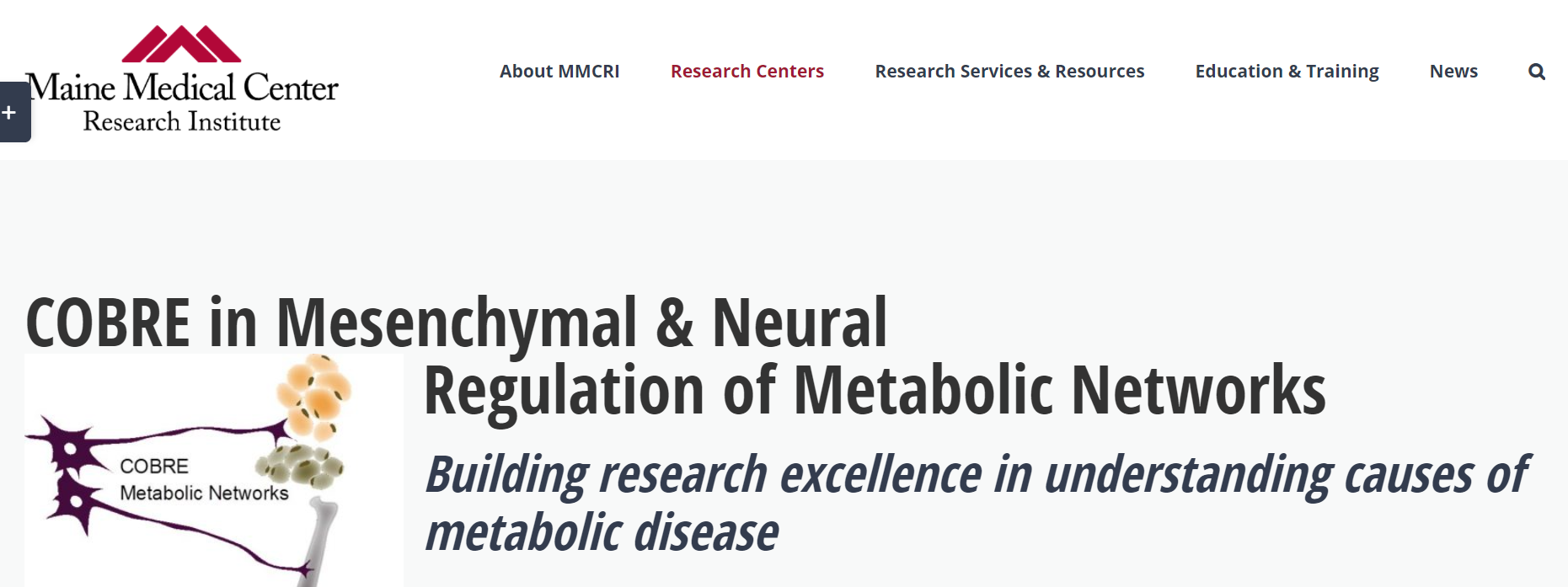Whole body metabolism is regulated by the integration of multiple organ systems, including adipose tissue, the skeleton, and bone marrow. Imbalance in the regulation of these tissues leads to chronic disorders such as obesity and osteoporosis. Adipocytes and osteoprogenitor cells share a common mesenchymal precursor, and link these two highly prevalent diseases. Mesenchymal progenitors are also tightly regulated during aging, nutritional stress, and rapid temperature shifts. There is growing appreciation that the sympathetic nervous system plays a unique role in this metabolic regulation, both in health and in disease states. Our overall program goal is to define specific molecular and signaling pathways that integrate the brain, bone, and adipose tissue in regulation of metabolic networks. This COBRE program, led by Drs. Lucy Liaw and Clifford Rosen, brings together four projects that test complementary aspects of adipocyte and skeletal metabolic function, and their regulation by central nervous system input. Project 1 (A. Brown) will study the role of BMP signaling in brown adipogenesis and thermogenesis, and will optimize thermogenic capacity in human iPS-derived brown adipocytes by modifying BMP signaling. This project has high translational significance in relation to obesity and its related co-morbidities. Project 2 (M. Reagan) addresses the origin and function of bone marrow adipose tissue, a unique depot that is enhanced in osteoporosis and obesity, and may contribute to skeletal fragility. This project will test the novel hypothesis that osteocyte-derived sclerostin promotes marrow adipogenesis via inhibition of Wnt signaling, and will utilize bioengineering approaches and mouse models of altered bone physiology. Project 3 (C. Duarte) is a translational project addressing the consequences of atypical antipsychotics on bone fracture risk. Atypical antipsychotics such as risperidone (RIS) are highly prescribed for psychiatric and behavioral symptoms, and have side effects that include bone loss, increased fracture risk, and weight gain. This project will study nursing home residents, including prevalent users of RIS and β-blockers, which alone show a protective effect on bone loss in animal studies. This project will determine if the combination of RIS and β-blockers reduce the risk of fracture compared to RIS alone. Project 4 (K. Motyl) is complementary to Project 3, and uses mouse models to test the novel hypothesis that RIS acts on the central nervous system to target bone loss directly or via activation of brown adipose tissue. This project proposes novel analyses of RIS in brain regions that innervate bone, and also tests the hypothesis that RIS- induced activation of brown adipose tissue can, in turn, mediate bone loss. These projects will be supported by an Administrative and Professional Development Core that emphasizes scientific collaboration and continued professional development, and three scientific cores: (i) Proteomics and Lipidomics Core (C. Vary), (ii) Histopathology and Histomorphometry Core (V. Lindner), and (iii) Physiology Core for the Mesenchymal and Neural Regulation of Metabolic Networks COBRE (C. Rosen). We will investigate mesenchymal progenitor cell biology and neural signaling to gain novel insights into the mechanisms underlying metabolic health and disease. By studying the interactions of bone, adipose tissue, and the nervous system in the regulation of metabolism, we will better understand how these metabolic networks contribute to two major diseases in this country – osteoporosis and obesity – and we will gain insight into metabolic side effects of antipsychotic drugs. These studies should lead to translational and clinical research that will ultimately advance better treatment and prevention programs for obesity and osteoporosis, and more effective use of antipsychotic medications.

